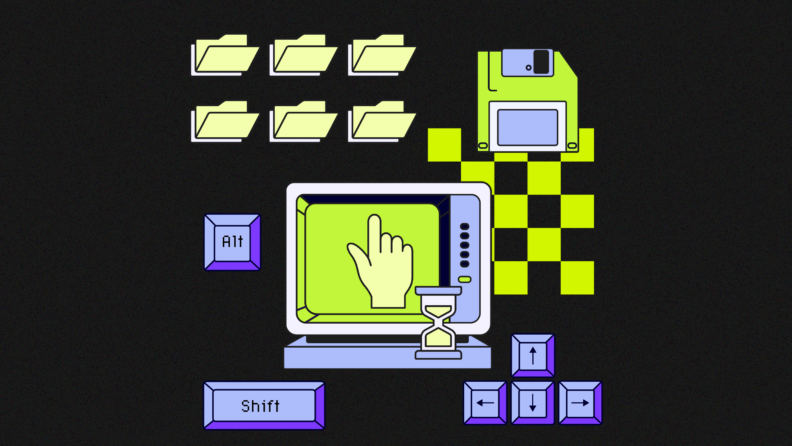In an era where technology is integral to business operations, effective IT asset management (ITAM) has never been more critical. ITAM helps keep track of hardware and software assets, strategically managing them to optimize their value, control costs, and mitigate risks.
IT asset management has come a long way from its humble beginnings of spreadsheet tracking. Today, it's a sophisticated field with established standards and practices. In the current tech landscape, dominated by SaaS, public cloud, and cutting-edge technologies like generative AI, ITAM faces unique challenges and opportunities.
That's why I'm sharing three best practices that will guide organizations in managing their IT assets effectively. These practices are vital to achieving financial efficiency, bolstering security, and maintaining agility in embracing new tech.
I'll also shed light on compelling use cases and the forward trajectory of ITAM, including its intersection with Financial Operations (FinOps), to provide a comprehensive understanding of how ITAM can be a pivotal factor in the success of modern businesses.
What is IT Asset Management (ITAM)?
IT asset management (ITAM) is as old as software itself; as soon as organizations started using hardware and software at scale, they needed tools to provide visibility into these complex ecosystems, control the cost of licenses, manage audits and compliance, and oversee risk.
Traditionally, this was managed by a small team utilizing spreadsheets, who were also responsible for software governance and audit support. As the volume and complexity of software licenses expanded, individuals with spreadsheets became insufficient. Subsequently, we have a whole ITAM industry comprising enterprise tools, professional bodies, and ISO standards, with many vendors providing outsourced asset management services.
As software-as-a-service (SaaS) and Public Cloud have become ubiquitous within the enterprise ITAM disciplines, tools have evolved to address new challenges. These include identifying and managing the risk of shadow SaaS and SaaS sprawl.
Additionally, while business units and individuals benefit from greater control over purchasing and trialing applications, organizations have lost control over technology budgets, license compliance risks, and security risks related to application sprawl.
IT asset disposition (ITAD) has also become a key focus, ensuring that obsolete or end-of-life assets are properly disposed of in a secure and environmentally responsible manner, preventing data breaches and ensuring compliance.
This is greatly exacerbated in organizations with multiple business units or geographies and those undergoing significant mergers and acquisitions (M&A). With the compound effect of recent developments such as ChatGPT and other generative AI tools, IT asset management practices and tools have become even more critical for good governance and security.
The growing complexities involved in IT asset management result in a number of benefits for those who actively maintain their ITAM practice:
3 Best Practices For IT Asset Management
1. Meticulous License Management: A Financial Imperative
In today’s economic climate, IT and procurement teams are being asked to reduce spending and have tighter control over budgets, often without understanding where spending is happening. This necessitates a deep understanding of software expenditures. Often, decentralized software procurement leads to unexpected costs, primarily due to licenses procured by various business units without adequate utilization checks.
A significant financial burden arises from two primary sources of wastage: (1) provisioning a license that is either not used or could be satisfied by a lower-tier license and (2) the licensing of different tools that achieve the same outcome.
To navigate this complex terrain and reduce IT costs, organizations must leverage the intricacies of licensing agreements to their advantage. Many licenses offer upgrade and downgrade rights, as well as Bring Your Own License (BYOL) options in hybrid environments. Identifying these and using them effectively can yield significant savings.
Furthermore, a proactive stance in vendor audits, particularly with major vendors like Oracle or SAP, is crucial. Utilizing ITAM tools that are certified for these vendors enables organizations to optimize their license usage before an audit, often leading to significant financial leverage and savings during these evaluations.
- Enhanced Risk Management: A Non-Negotiable Priority in ITAM
Effective risk management is not merely a best practice; it's a cornerstone of organizational security and stability within ITAM. Organizations lacking comprehensive visibility into their software licenses, SaaS applications, and the broader spectrum of shadow IT face significant security vulnerabilities. The software and applications procured without thorough vetting may fail to meet critical security and legal standards, exposing the business to heightened risks of cyberattacks and data breaches.
The growing risks for organizations without an ITAM practice will have financial repercussions as well; the credit agency Standard & Poor stated having an ITAM practice is so critical for proper risk management and cyber security that organizations lacking these frameworks may find their credit ratings negatively impacted.
The implications of inadequate ITAM practices extend beyond security; they have tangible financial consequences. The credit agency Standard & Poor stated that having an ITAM practice is critical for proper risk management and cybersecurity. The absence of a robust ITAM framework can adversely affect an organization's credit rating, underscoring the financial dimension of ITAM.
SaaS applications have made security concerns incredibly complex. Shadow SaaS, in particular, represents a significant and often unaddressed threat, complicating the security landscape for many organizations. Additionally, the advent of generative AI technologies has introduced new concerns regarding intellectual property and data integrity. The inability of most organizations to track the usage and implications of generative AI further amplifies these risks.
Therefore, it is imperative for organizations to prioritize a comprehensive and proactive approach to ITAM, ensuring that all software and technological assets are not only efficiently managed but also rigorously secured against the evolving spectrum of digital threats.
- Gain Agility and Understanding Of New Technologies
As companies look to digitally innovate and restructure their services and platforms, ITAM provides organizations, and IT teams in particular, with the visibility to overcome these issues. IT teams need complete visibility to be proactive about minimizing risk and containing budgets, and employees need to be made aware of the bigger picture when it comes to purchasing licenses and applications.
ITAM practitioners can provide visibility and recommendations to the organization on where to rationalize applications, reduce licenses, and perform additional research or end-user training to mitigate security events.
Virtual machines, containers, cloud services, and AI are all areas where an IT asset management tool will help teams gain visibility into what they have available, what is actively being used, and where they can decommission or rationalize usage to get costs under control.
Compelling Case Studies
Many of us with long careers in IT will have multiple examples of when we’ve been conscious of wastage, but have lacked the time or resources to address these inefficiencies.
Reflecting on my own experience in a previous role, I was tasked with auditing a substantial Oracle software suite. This task was complicated by a history of M&As and multiple organizational restructurings, leading to a loss of oversight over our license inventory, their specific uses, and even their necessity.
This issue was repeatedly acknowledged but remained unresolved for nearly two years. Only when we engaged an external IT asset management (ITAM) service did we uncover and rectify inefficiencies, ultimately realizing savings in the seven-figure range across our IT infrastructure.
For large organizations, having an established IT asset management practice with the right tools is a crucial step toward risk management and cost savings.
Another great example is Panasonic, an organization where IT and software asset management can be challenging to manage due to the company’s autonomous management philosophy. Panasonic's decentralized management structure, with distinct regional and business unit silos, posed significant challenges in managing IT and software assets. This decentralization made it nearly impossible for IT leaders to effectively track and manage software assets using conventional methods like spreadsheets. However, implementing a robust ITAM strategy equipped with the appropriate software tools led to substantial cost savings.
Notably, the company achieved a six-figure reduction in expenses related to Microsoft licenses alone. This case underscores the necessity of comprehensive planning and strategic insights in managing the complexities of IT assets dispersed across a global enterprise.
Enhancing IT Asset Management for the Future
As we navigate the evolving landscape of IT, integrating IT asset management with the rapidly advancing field of Financial Operations (FinOps) is crucial. FinOps is revolutionizing how we handle cloud infrastructure costs, including Infrastructure as a Service (IaaS) and Platform as a Service (PaaS). To stay ahead, IT asset management (ITAM) must merge its expertise with FinOps, ensuring effective management of licensing costs across varied IT environments.
Take SQL Server as a case in point. It can be deployed in multiple ways – on desktops, servers, within IaaS, in containers, or as managed SQL services. A deep dive into the licensing intricacies of these deployment models, combined with the cost insights FinOps offers, is vital. This approach provides a clear, comprehensive view of IT spending, ensuring that every dollar spent is an investment towards efficiency and growth.
IT leaders and practitioners keen to explore the synergies between ITAM and FinOps can dive deeper into this subject by examining '6 Collaborative Use Cases for FinOps and ITAM Teams', a resource that provides valuable insights into the effective collaboration of these two critical disciplines.
What emerging trends and technologies in IT asset management are you seeing? How should organizations prepare to ensure optimal efficiency, cost-effectiveness, and security in their IT operations in 2024? Share your thoughts below, and join The CTO Club newsletter for more discussions.





